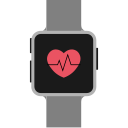Cilest

Oral contraceptives work in three ways: by preventing an egg being released from your ovaries; by making the fluid (mucus) in your cervix thicker, which makes it more difficult for sperm to enter the womb; and by preventing the lining of your womb thickening enough for an egg to grow in it. Cilest is a 21-day pill – you take one each day for 21 days, followed by 7 days when you take no pills.

It can be taken up to 12 hours later than usual, an additional benefit it has over regular mini pills, which need to be taken within the same three hours every day

Due to the absence of oestrogen the Cerazette pill is said to be much safer for breastfeeding women. It is safer for women over 35 who smoke.
How does Cilest work?
Combined oral contraceptives pils like Cilest work by over-riding the normal menstrual cycle. In a woman's normal menstrual cycle, levels of the sex hormones change throughout each month. The hormones cause an egg to be released from the ovaries (ovulation) and prepare the lining of the womb for a possible pregnancy. At the end of each cycle, if the egg has not been fertilised the levels of the hormones fall, causing the womb lining to be shed as a monthly period.
The daily dose of hormones taken in the pill work mainly by tricking your body into thinking that ovulation has already happened. This prevents an egg from ripening and being released from the ovaries each month.
Read the Patient Information Leaflet
How much does Cilest cost?

Packs and prices
Possible side effects
The Pill may slightly increase your risk of having a blood clot (called a thrombosis), especially in the first year of taking it.
A clot in a leg vein – a deep vein thrombosis (or DVT) – is not always serious. However, if it moves up the veins to the lungs, it can cause chest pain, breathlessness, collapse or even death. This is called a 'pulmonary embolism' and is very rare.
Very rarely, blood clots can also form in the blood vessels of the heart (causing a heart attack) or the brain (causing a stroke). In healthy young women the chance of having a heart attack or stroke is extremely small.
Get StartedDo not take Cilest if
- you are breast feeding and your baby is less than 6 weeks old
- you have breast or liver cancer
- you have an irregular heartbeat (atrial fibrillation), problems with heart valves or heart failure
- you have ever had a problem with your blood circulation. This includes blood clots, for example in the legs (deep vein thrombosis) or lungs (pulmonary embolism), or a heart attack or stroke
- you have any conditions which make you more at risk of a blood clot (thrombosis – see Patient Information Leaflet), such as having an operation and being off your feet for a long time
- you have very high blood pressure
- you smoke 15 or more cigarettes a day and you are 35 years old or more
- you have migraines which affect your vision
- you have had diabetes for more than 20 years or have diabetes with secondary problems
- you have or have recently had a severe liver disease
- you have the disease systemic lupus erythematosus (SLE) with or without Raynaud's disease
- you are allergic (hypersensitive) to any of the ingredients in Cilest.
Read the Patient Information Leaflet
How do I take it?
Cilest is a monophasic pill. This means that each tablet has the same dose of hormones in it. One tablet is taken every day for 21 days and you then have a seven day break from pill-taking. During your seven day break, the levels of the hormones in your blood drop, which results in a withdrawal bleed that is similar to your normal period. You start the next pack after the seven pill-free days are up, even if you are still bleeding.
The tablets come in a calendar pack marked with days of the week to help you remember to take a pill every day for three weeks, followed by a week off. You will still be protected against pregnancy in your pill-free week, provided you took all the pills correctly, you start the next packet on time and nothing else happened that could make the pill less effective (eg sickness, diarrhoea, or taking certain other medicines – see below).
Get Started How much does Cilest cost?When can I start taking it?
Ideally, you should start taking this pill on day one of your menstrual cycle (the first day of your period). This will protect you from pregnancy immediately and you won't need to use any additional methods of contraception. If necessary, you can also start taking it up to day five of your cycle without needing to use additional contraception when you start. However, if you have a short menstrual cycle (with your period coming every 23 days or less), starting as late as the fifth day of your cycle may not provide you with immediate contraceptive protection. You should talk to your doctor or nurse about this and whether you need to use an additional contraceptive method for the first seven days.
You can also start taking this pill at any other time in your cycle if your doctor is reasonably sure that you are not pregnant. However, if you start taking this pill at any other time in your cycle, you won't be protected from pregnancy straight away and you will need to use additional contraception, eg condoms (or not have sex) for the first seven days of pill taking.
If you have given birth and are not breastfeeding, you can start taking this pill on day 21 after the birth. You will be protected against pregnancy immediately and do not need to use extra contraception. If you start taking it later than 21 days after giving birth, you will need to use extra contraception for the first seven days.
If you are starting this pill immediately after a miscarriage or abortion at under 24 weeks, you will protected against pregnancy immediately. If you start taking it more than seven days after the miscarriage or abortion, you should use extra contraception for the first seven days of pill taking.
What do I do if I miss a pill?
You should try and take your pill at the same time every day to help you remember to take it.
One pill missed
If you forget to take ONE pill, or start your new pack one day late, you should take the pill you missed as soon as possible, then continue taking the rest of the pack as normal. You will still be protected against pregnancy and you don't need to use extra contraception.
Two or more pills missed
If you forget to take TWO or more pills, or start your new pack two or more days late, you won't be protected against pregnancy. You should take the last pill you missed as soon as possible, forget the other missed ones and then continue to take your pills, one every day, as normal. You should either not have sex, or use an extra barrier method of contraception, eg condoms, for the next seven days.
If you had unprotected sex in the seven days before you missed pills, you may need emergency contraception (the morning after pill). Ask for medical advice.
If there are fewer than seven pills left in your pack after your last missed pill, you should finish the pack and then start a new pack straight away without a break. This means skipping your pill-free week.
If there are seven or more pills left in your pack after your last missed pill, you should finish the pack and have your seven day break as usual before starting the next pack.
Read the Patient Information Leaflet
Get Started How much does Cilest cost?





